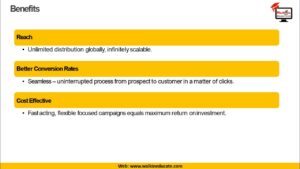A Beginner’s Guide to Website Optimisation | SEO | Search Engine Optimisation | Website Optimisation
https://profiletree.com/how-to-write-a-blog-for-seo-what-you-should-do-to-help-it-rank/
Welcome to this ProfileTree video.
In this video, we will take you through a beginner’s guide to website optimisation to allow you the know how to optimise your website with SEO to help support your website being found in search engine results.
Optimising a website, especially for beginners, can be a daunting task. However, understanding some fundamental principles can make the process smoother. Here are some basics beginners should know about website optimisation:
Understand SEO: Search Engine Optimisation (SEO) is a crucial aspect of website optimisation. It involves making your website more visible to search engines, which can increase organic (non-paid) traffic. This includes keyword research, on-page SEO (like using keywords in your titles, URLs, and content), and off-page SEO (like backlinks from other websites).
Mobile Responsiveness: With more users accessing websites from mobile devices, it’s essential to ensure your site is mobile-friendly. This includes responsive design that adjusts to different screen sizes and easy navigation for mobile users.
Site Speed: Fast-loading websites offer a better user experience and are favoured by search engines. Use tools like Google’s PageSpeed Insights to check your site speed and get suggestions for improvement.
Content is King: Quality, relevant content is key to attracting and retaining website visitors. Make sure your content provides value to the user, is easy to read, and is updated regularly.
User Experience (UX): A well-designed, intuitive website can increase user engagement and conversions. This includes factors like easy navigation, clear calls-to-action, and a clean, visually appealing design.
Use Analytics: Tools like Google Analytics can provide valuable insights into your website’s performance, such as where your visitors are coming from, what pages they’re visiting, and how long they’re staying on your site. Use this data to make informed decisions about what to improve.
Optimise Images: Large, uncompressed images can slow down your website. Make sure to compress your images and use appropriate file formats to improve site speed. Also, include alt text for accessibility and SEO.
Meta Descriptions and Title Tags: These are crucial for SEO. They should be descriptive and include your focus keywords, as they appear in search engine results and can influence whether someone clicks on your site.
Secure Your Website: Users and search engines prefer websites that are secure. Make sure your site uses HTTPS, which encrypts data for safer browsing.
Build Quality Backlinks: Backlinks, or links from other websites to your own, can improve your site’s SEO. However, focus on the quality of the backlinks – they should be from reputable websites relevant to your industry.
Remember, website optimisation is an ongoing process. Search engine algorithms and user expectations change over time, so it’s important to continually monitor your website’s performance and make necessary adjustments.
——–
Did you love this video? We’d love to hear your feedback by leaving us a review: https://g.page/r/CeyCZviVC0MMEBM/review
We would love your feedback or comments below on what you thought. Be sure to like and subscribe for our upcoming videos on ProfileTree’s Website.
———-
We hope you find this video masterclass helpful and if you do, be sure to give it a like and subscribe for more videos from us and masterclasses, tutorials, and more.
If you have questions about how to grow your business online, check out our website at https://www.profiletree.com for all our services!
#seo #searchenginemarketing #searchengineoptimization
source







